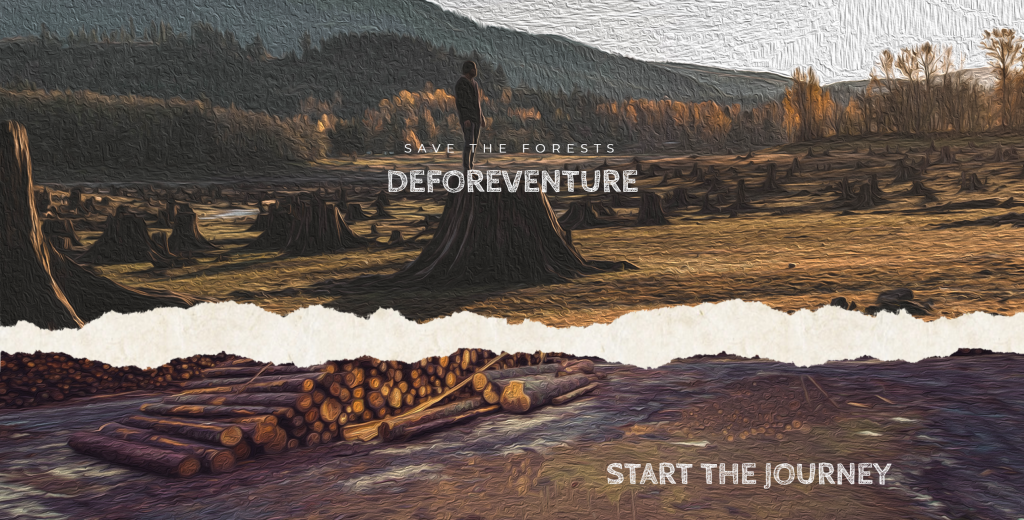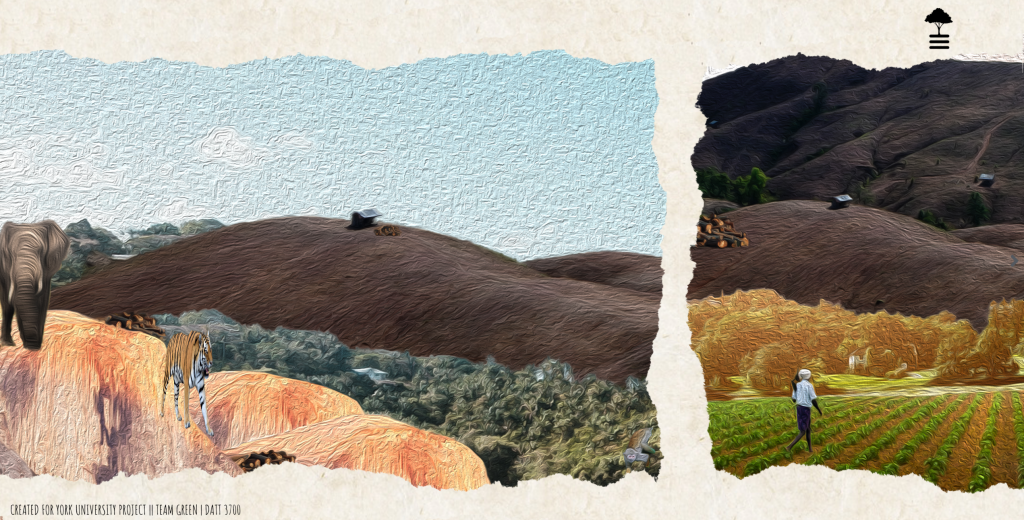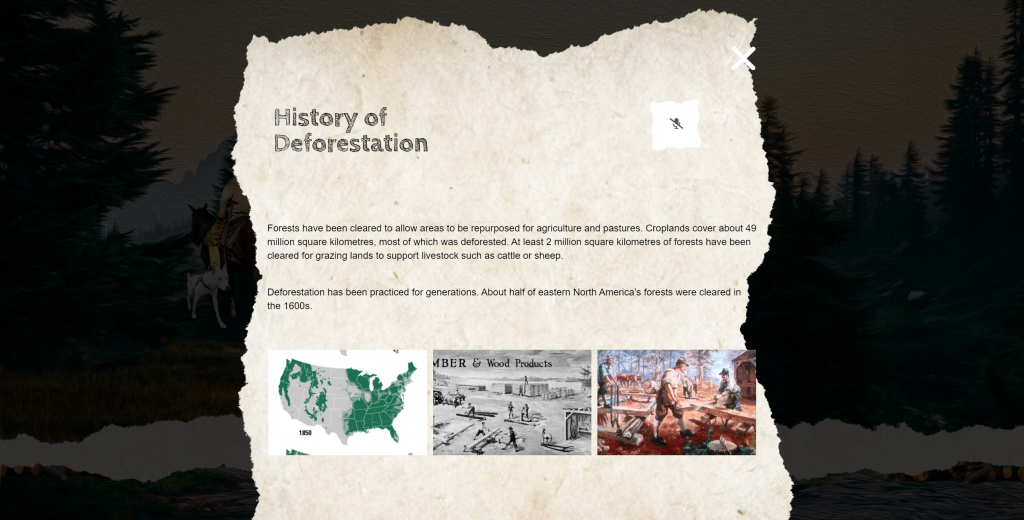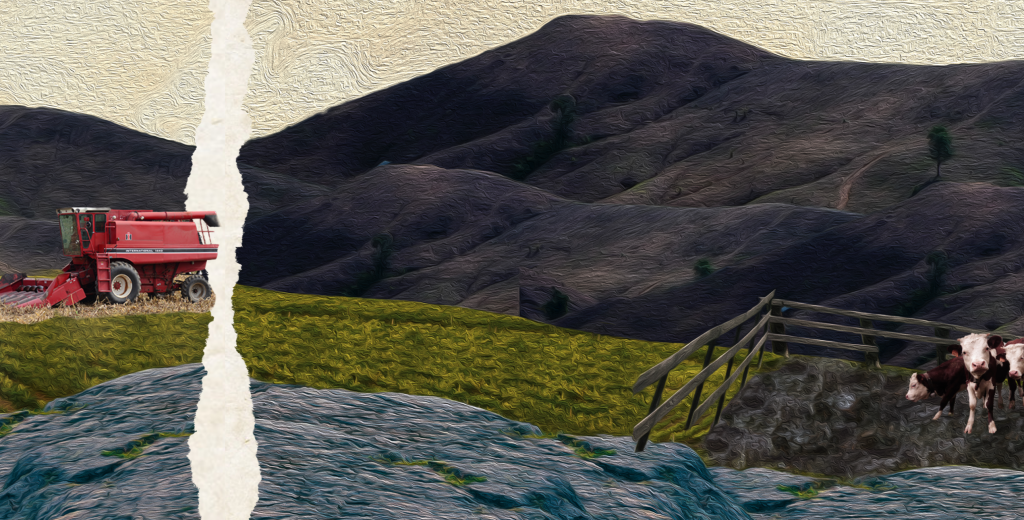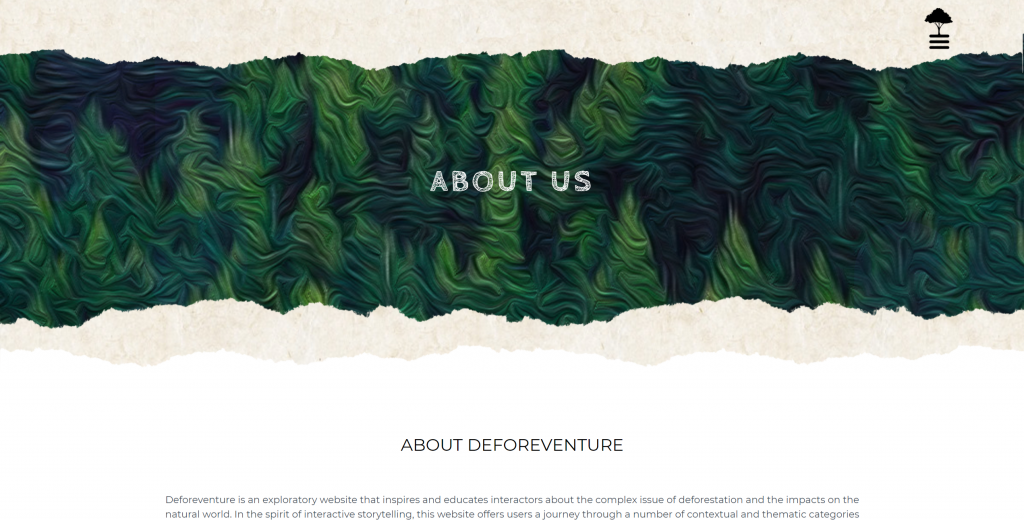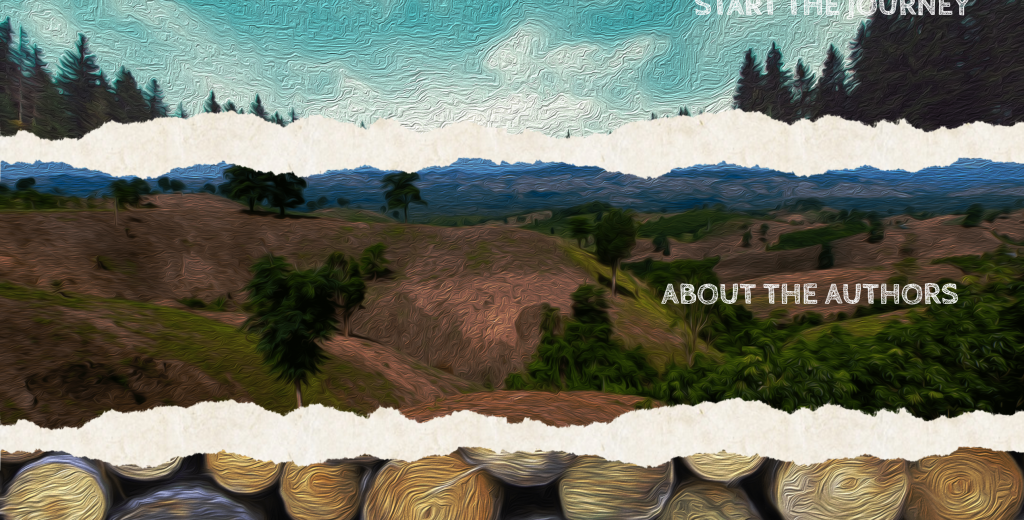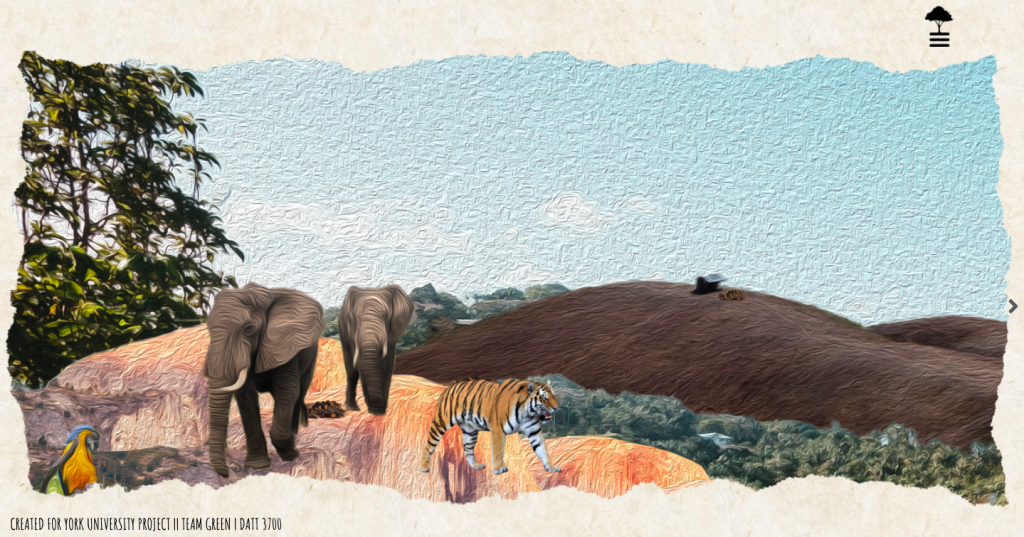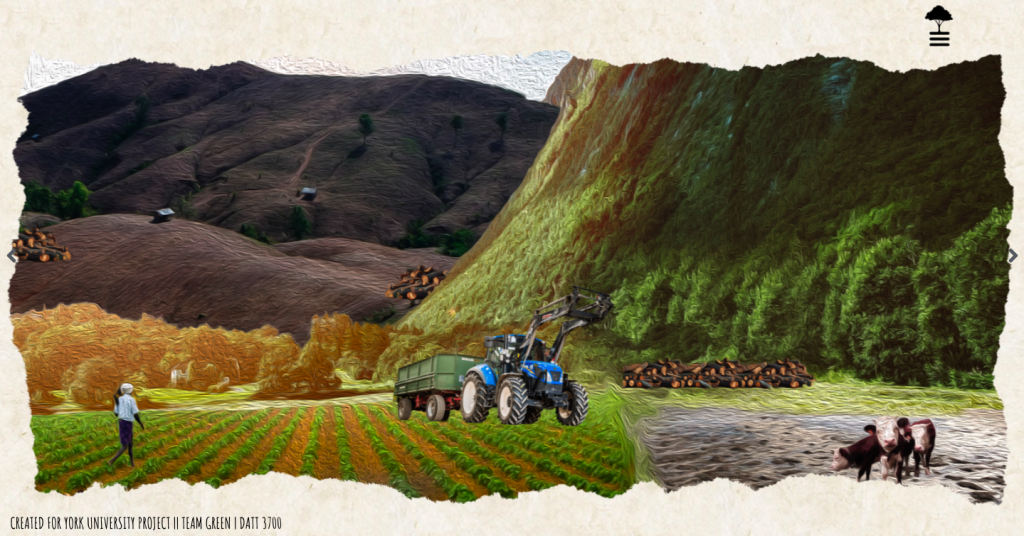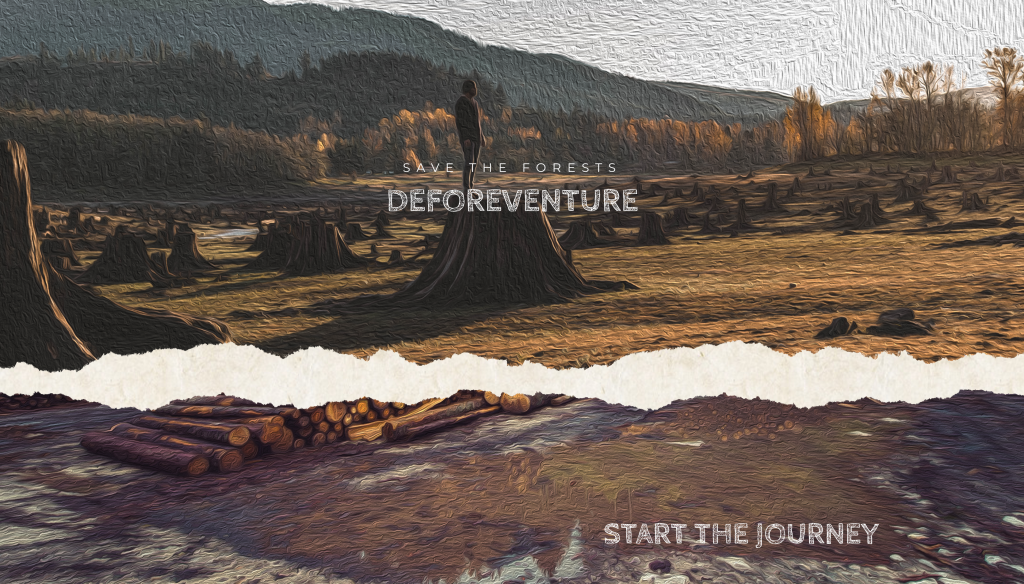
Philip Michalowski, Ruilin Qi, Megan Stevens, Zining Wan, Bei Zhang, and Hikari Takeda
https://wordpress-311999-1743870.cloudwaysapps.com/
Deforeventure is an exploratory website that inspires and educates interactors about the complex issue of deforestation and the impacts on the natural world. In the spirit of interactive storytelling, this website offers users a journey through a number of contextual and thematic categories that reveal the causes and effects of deforestation on animals, people, and natural environments.
The website consists of five categories that explore themes relating to deforestation, which are wildlife, agriculture, climate change, natural extraction, and population. In each category, there are multiple connected pages, and at least one object on each page which is the cause or impact of deforestation. These objects are turned from real pictures into drawings and have matching sounds once the user’s mouse is hovering over them. It greatly increases the interactivity and engagement of the website. After the object is clicked, an information box pops up. There is a title, text summary, voice-over, and related pictures of the object. Deforeventure’s various information transmission not only provides users with freedom of choice but also enhances flexibility and Equitable use in the user experience. Besides, the elements involved in the entire journey include up and down sliders, left and right sliders, and flipped and clickable object elements, etc. Users can enjoy and explore the journey by sliding and clicking with the mouse. Also, the About Author section of Deforeventure shows the bios of all members of this group. The Resource section is all referenced materials.
From the 2020-2021 course:
DATT 3700 Collaborative Project Development
More than ever, society is looking to the social sciences and humanities to help understand and mitigate global challenges in the face of change. The Social Sciences and Humanities Research Council of Canada (SSHRC) created an initiative entitled Imagining Canada’s Future, which challenges Canada’s social scientists and humanities researchers to address emerging economic, societal and knowledge needs in order to help guide decision-making across all sectors towards a better future. In response to one of two selected probes, students will create artworks that will raise awareness to their selected theme.
The themes for this course will be:
1) Environment: Living Within Earth’s Carrying Capacity
Humankind is putting an unsustainable strain on the Earth’s capacity to support life. We are at, or near, the tipping point for several ecosystem services. Fundamental changes in our economic and political systems and our way of life may be needed over the next two or three generations if humans are to live within the carrying capacity of the planet.
2) The Pervasive Contamination of the ‘Natural’
Everything is contaminated. What is safe? Trash is obvious, but microplastic contamination of marine fish stocks is not, nor is the chemical contamination of groundwater resulting from our modern reliance on pharmaceuticals. We will be challenged to thrive in a world where contamination is pervasive at all scales and in all environments.
Students were challenged to reflect on and consider the bigger problems contributing to the above issues by following a problem analysis methodology, and then create an artwork that addresses the identified problem. The created artworks may incite awareness in their viewer, speculate about possible futures (dystopic/utopic), or provide solutions.
Return to the Digital Media END OF YEAR EXHIBITION 2020 • 2021
